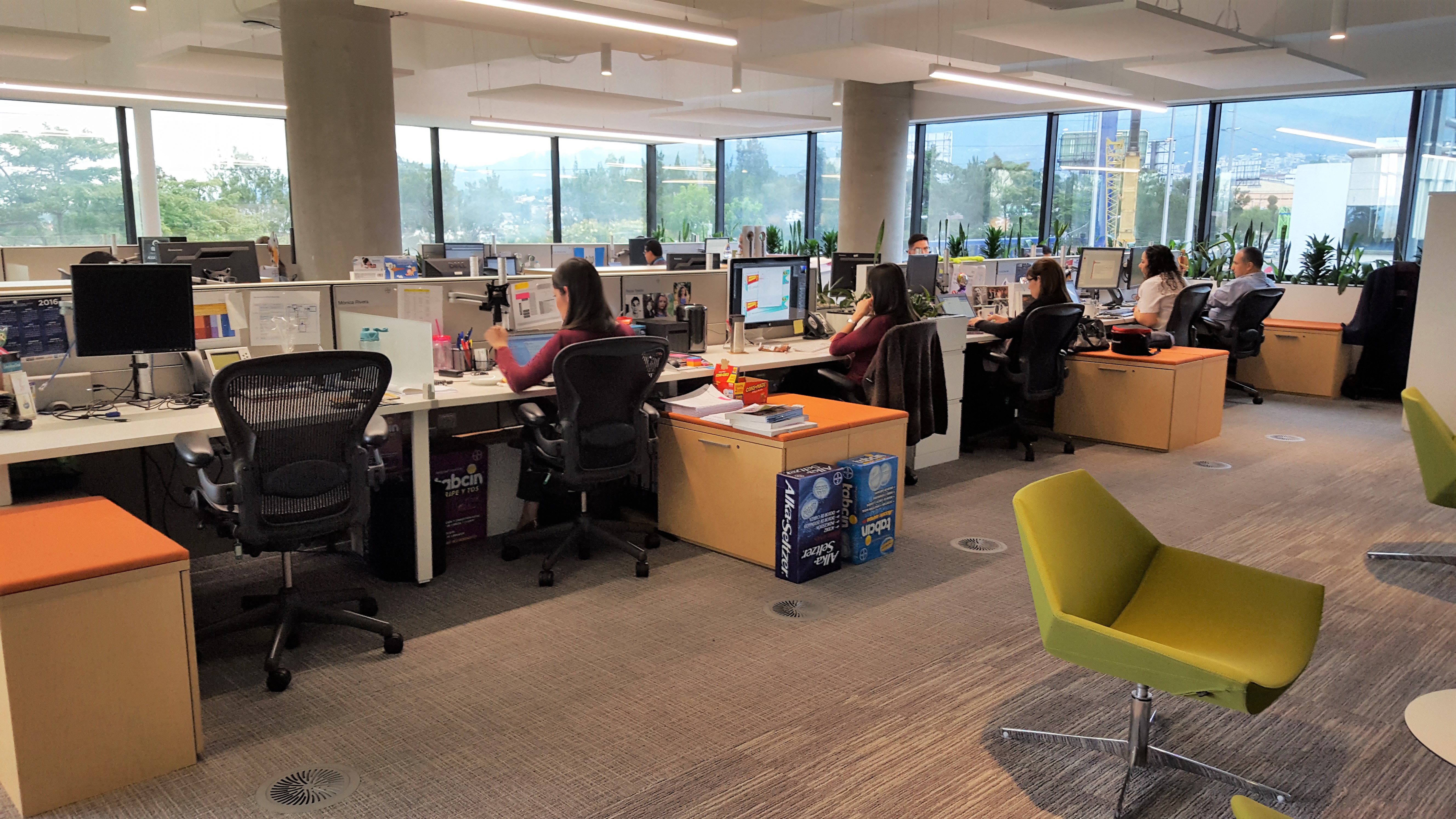“We see value in introducing coworking into the corporate organization as a way to put companies into motion, to make them more agile and more capable of adapting and innovating on a reliable basis.” – Andrew Jones, Unlocking Organizations for Greater Innovation: The Role of the Community Manager
Allwork visited the newly transformed offices of Bayer in Guatemala and spoke with Corporate Manager, Fabio Ziegler, about their decision to adopt a coworking model for their Guatemalan headquarters. Here’s their story:
Coworking is increasingly being associated with the future of work. The movement has gone beyond the boundaries of the gig economy and the world of freelancers and entrepreneurs, and it’s entered the world of corporate business. While some companies have opted to move part of their teams into coworking spaces, others have decided to implement the coworking concept within their spaces.
The latter is the case of Bayer in Guatemala City. Bayer is a global Life Science company that develops products in the areas of healthcare and agriculture. The company first entered the Guatemalan market in 1962, producing and distributing agricultural products; two years later, in 1964, the pharmaceutical branch followed.
Regionally speaking (Central America and the Caribbean), Bayer in Guatemala has the largest volume of sales and exportations, and it also has two of the production facilities located in the entire region.
In 2013 Bayer Guatemala was certified as a Great Place to Work for the first time, and in 2015 their score increased 10 percentage points; this following the company’s decision to transform and redesign its Guatemalan headquarters.
Allwork visited the newly transformed offices of Bayer in Guatemala and spoke with Corporate Manager, Fabio Ziegler, about the transformation and why they decided to adopt a coworking model for their Guatemalan headquarters.
“For 15 years the offices had remained the same,” Ziegler mentions. “We needed to modernize our workplace and embrace new trends and ways of working.”
“We decided to go for the open office concept, though initially we did have our reservations about how the change would affect productivity levels.”
The offices, located in the area of Mixco, Guatemala span about 3,400 square meters. The architectural firm Studio Domus was in charge of the transformation project, and “believe it or not, it only took them about 4 months to finish.”
“We had been thinking about redesigning the offices for some time, but the final trigger was that we needed to expand the production plant. This meant that we needed to fit about twice as many people in the same amount of space.”
The coworking model seemed to them the right solution, plus, Ziegler notes, “it would allow us to remove all the barriers that could be deterring effective communication within teams.”
“Everything except the outer structure of the building was torn down.” And although the actual construction took only about four months, Ziegler mentions that the consulting, the talking, and the finalizing of the details was a long and arduous process. But one that was worth it.
“We wanted everyone to feel a part of process. Every single employee had a say; we conducted surveys, we appointed change agents, we had various panel discussions, we had focus groups. We wanted to know what our workers were worried about, we wanted to know what their ideal workplace would be like, we wanted to know what they thought we were missing.”
“We broke the paradigm by doing this; and although it took longer than originally expected and it increased the costs slightly, listening to the opinion of all 180 employees was worth it.”
Bayer in Guatemala became a benchmark of where the architecture in the country is going.
So what changed?
See for yourselves.


From opaque and dark colors to vibrant ones, from tall division walls to an open space, from artificial light to natural light; the right question is: what didn’t change?


 Dr. Gleb Tsipursky – The Office Whisperer
Dr. Gleb Tsipursky – The Office Whisperer Nirit Cohen – WorkFutures
Nirit Cohen – WorkFutures Angela Howard – Culture Expert
Angela Howard – Culture Expert Drew Jones – Design & Innovation
Drew Jones – Design & Innovation Jonathan Price – CRE & Flex Expert
Jonathan Price – CRE & Flex Expert











